Mountain Biking From Telluride To Moab: A Hut-to-Hut Adventure
Explore the San Juan Huts Telluride to Moab bike route! Travel 215 miles through forests and desert while enjoying fully stocked huts.
When my friend Michelle, who I biked across the state of Washington with, asked if I wanted to do the San Juan Huts Telluride To Moab ride with her, I said ‘sure!’ It couldn’t be harder than biking across a whole state, right? Wrong.
While the Telluride to Moab bike route is scenic and a great adventure, it’s definitely not a walk in the park. There are neverending hills, rough singletrack, high-elevation passes, ample opportunities for backcountry mishaps, and the potential for impassible terrain, among other challenges.
But navigating the San Juan Hut Systems is a bucket list trip for many riders, and for good reason. The views are epic, the hut camaraderie can be a major bonus, and the chance to unplug from the world for a week is one of the biggest draws.
So if you’re considering signing up for a hut-to-hut bikepacking trip, read on to learn more about how to plan your Telluride to Moab epic.
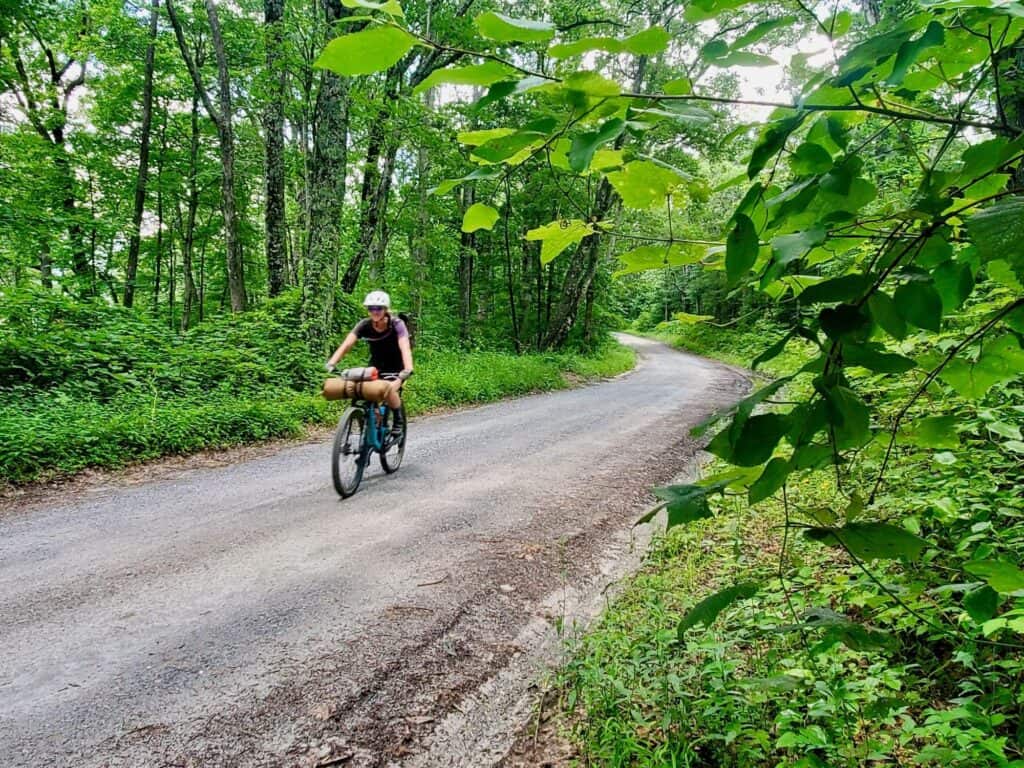
Need Help Planning Your Trip?
New to bikepacking? I’d love to help you plan your first (or next) overnight trip! Click the link below to set up a Q & A session.
A Brief History Of The San Juan Huts
The San Juan Hut System was dreamt up over 30 years ago by two backcountry adventurers who were inspired while on a hut-to-hut climbing/skiing trip in Canada. They felt like the US needed a similar system for backcountry adventure and they were the ones to build it.
Unfortunately, Joe Ryan’s friend died shortly after their trip from an avalanche accident, but Joe continued planning and in 1987 the San Juan Hut Systems was created outside of Telluride.
The initial 5 huts granted access to some of the best backcountry skiing in the country.
A few seasons later, Joe expanded the backcountry experience to include the San Juan Hut System Telluride To Moab mountain bike route and eventually the Durango to Moab mountain bike route as well.
Today, a variety of year-round outdoor enthusiasts can enjoy the San Juan Hut System including backcountry skiers, cross-country skiers, mountain bikers, hunters, hikers, and even long-distance runners.
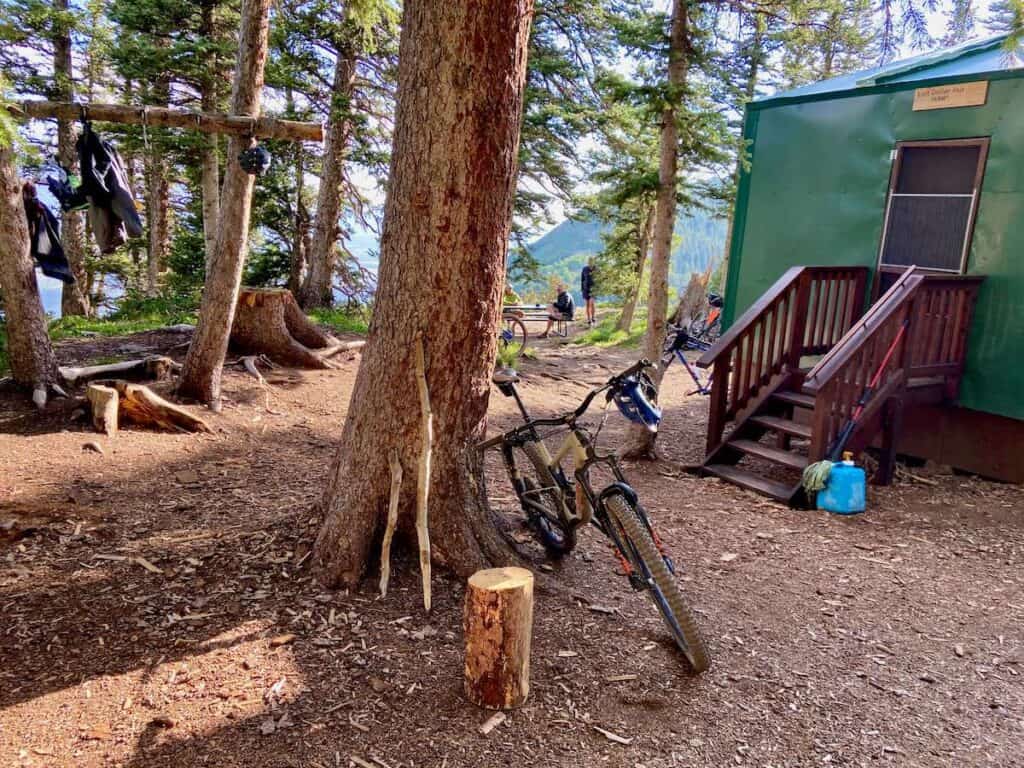
San Juan Huts Bike Trip Options
There are four mountain bike route options for the San Juan Hut Systems:
- Telluride to Moab | 6 days/7 nights | 201 miles | 18,205 ft +
- Durango to Moab | 6 days/7 nights | ~215 miles | ~23,000 ft + (couldn’t find exact stats)
- Telluride to Gateway | 4 days/5 nights | 143 miles | 10,839 ft +
- Durango to Paradox | 4 days/5 nights | 148 miles | 15,108 ft +
*The shorter 4 day/5 night trips follow the same route as the longer trips, but they just end two days earlier.
**The elevation gain and mileage listed are for the Standard Route only. Most days offer Alternative Routes that add elevation gain and mileage.
San Juan Huts Telluride to Moab Map
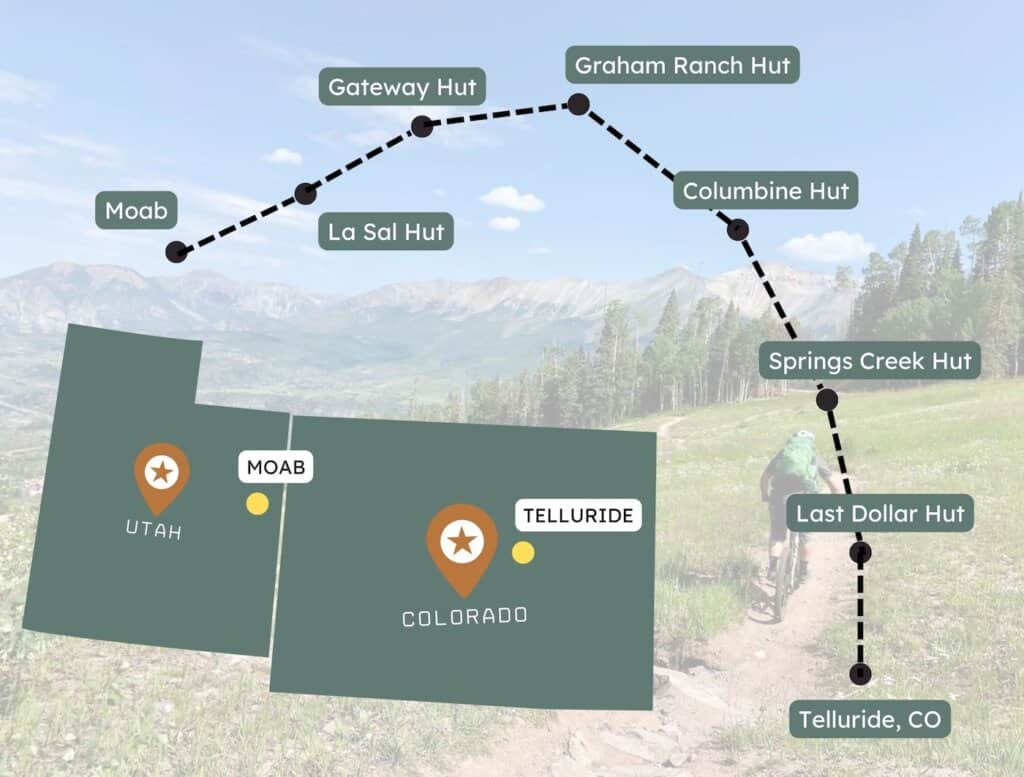
Preparing For Your Ride
We did the Telluride to Moab route, but preparation for all the trips would be pretty similar.
How challenging is It?
I’m not going to lie, this trip kind of kicked my butt. Between lack of sleep (dorm-style sleeping is not my jam), high elevation, and endless hills, the Telluride to Moab ride is not to be underestimated.
Most of the route is above 8,000ft and the first day tops out at over 11,000ft. So if you’re coming from sea level, keep that in mind. Train at altitude if you can.
Even though the overall ‘trend’ of this route is downhill toward Moab, there is still plenty of climbing. Every day has at least one or two big hills, so don’t make the mistake of thinking you’ll be coasting the whole way to Utah! (I believe the same is true for the Telluride to Durango trip as well)
As for technicality, if you stick to the Standard Route, you’ll be riding almost entirely on gravel roads so you won’t face any technical terrain at all.
If you venture onto the singletrack, however, be prepared to hike your bike and slide down some steep, loose pitches.
For more information on the singletrack see the Riding The Route section below.
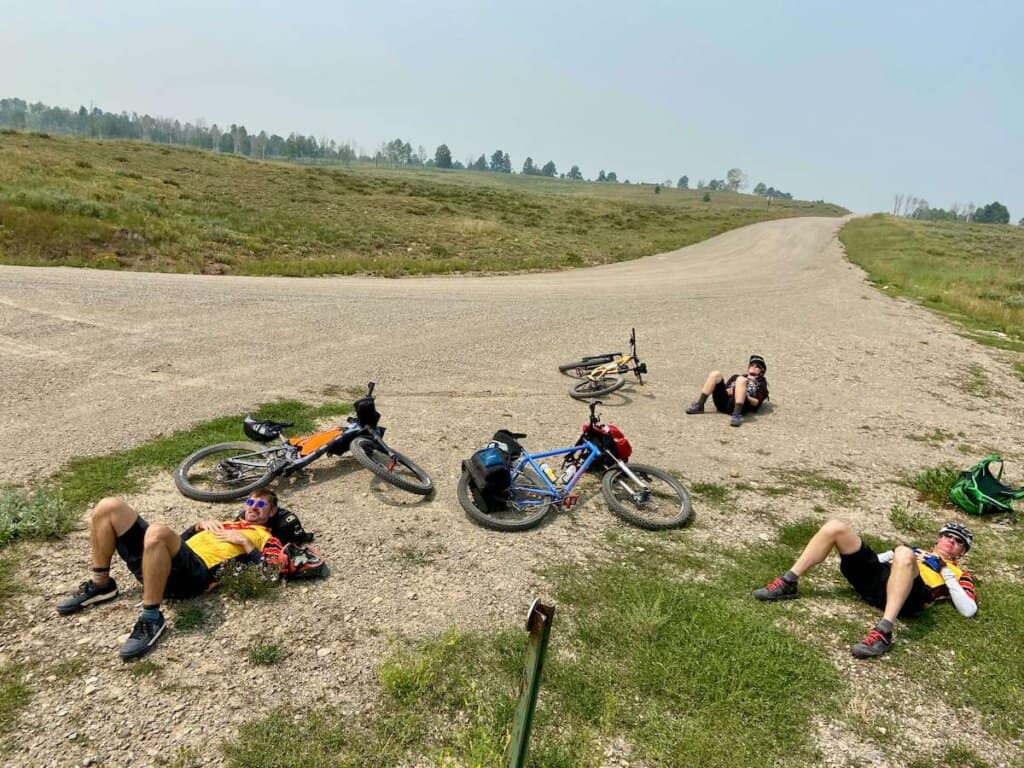
What Kind Of Bike Do You Need?
Despite the trip marketing, the San Juan Huts Telluride to Moab Mountain Bike Trip is really a gravel ride.
Even if you choose to do some of the singletrack, I wouldn’t consider this trip a “mountain bike” adventure.
With that being said, I would recommend a short-travel full-suspension mountain bike if you want to explore some of the singletrack alternatives. A mountain bike with ~120mm – 130mm of rear travel would be perfect.
If you plan on only sticking to the Standard Route and aren’t going to venture onto any of the alternate trails, a fully rigid gravel bike or a short-travel hardtail would be ideal.
How To Carry Gear
There’s no one right answer for how to carry your gear, but here are a few pointers:
Shop the Osprey Mira & Manta at:
Read next: Looking for bikepacking setup ideas? Check out my Tips on Dialing in Your Bikepacking Setup.
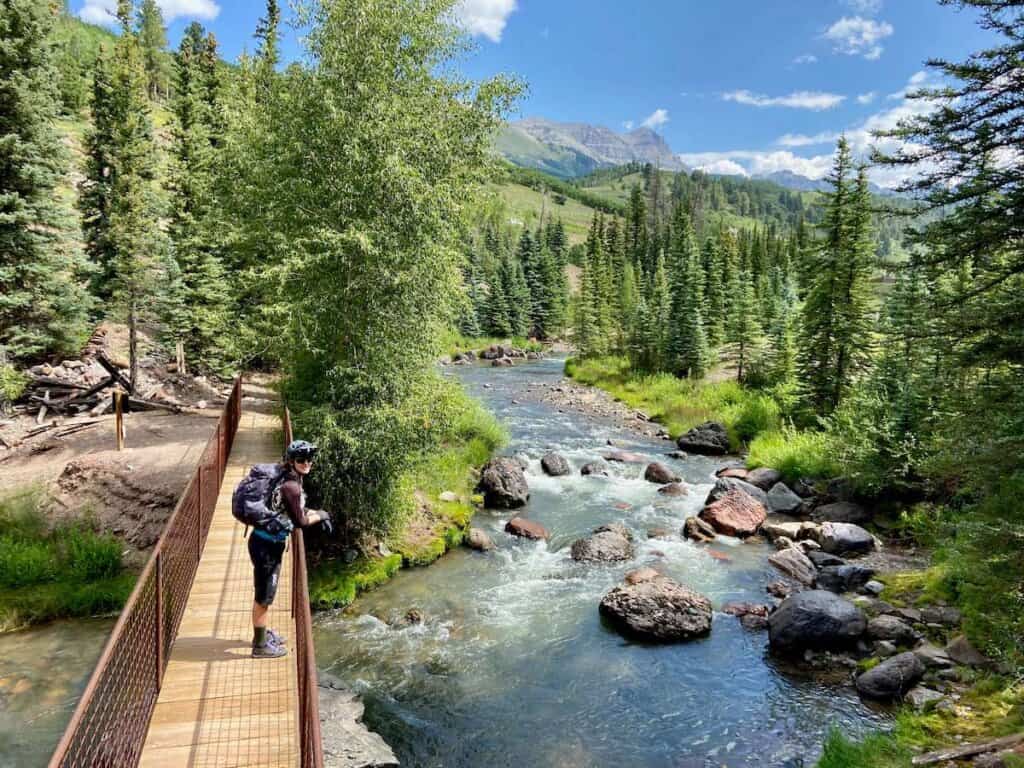
Best time of Year to Do The Telluride to Moab Ride
The Telluride to Moab bike route can be ridden anytime between June 1st and September 30th. We did our trip in early/mid-August and while we had great weather, I think we lucked out a bit. The weeks before and after our trip were plagued by thunderstorms.
If you choose to ride early in the season, you may encounter late spring storms, muddy trails, and cool temps. July-August tends to bring afternoon thunderstorms and descending down into Moab is hot.
If I were to do this trip again, I’d opt for early/mid-September for the best weather, cooler temperatures, and changing aspen trees.
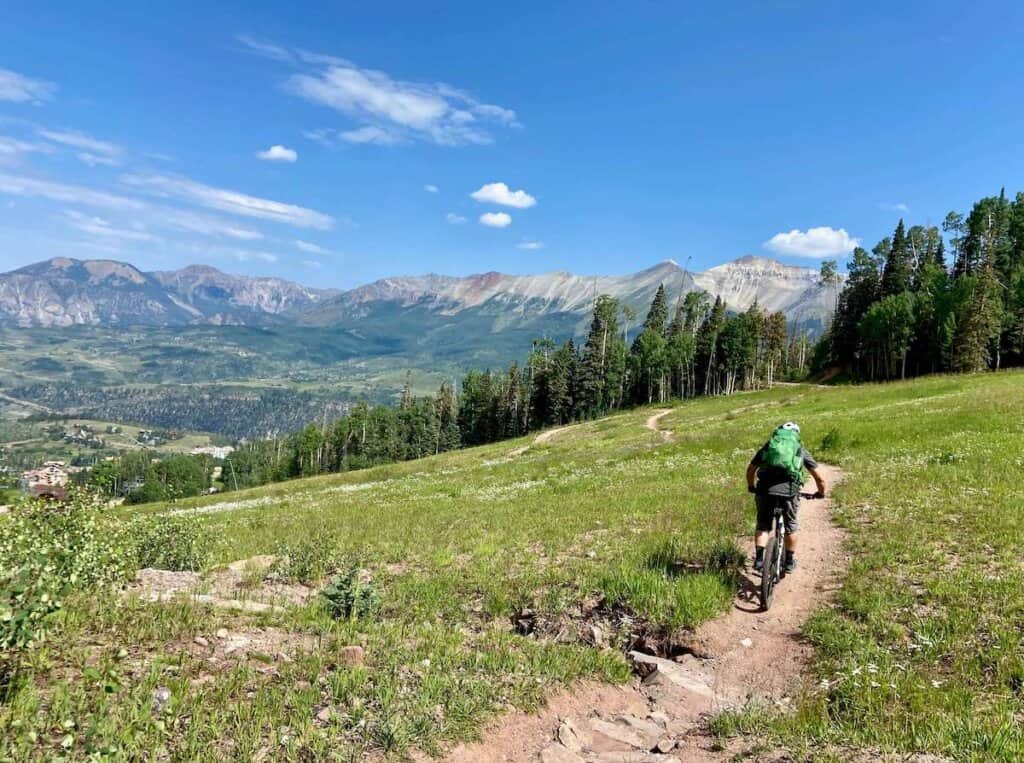
Shuttle Options To the Start
The Telluride to Moab San Juan Huts trip starts in Telluride, Colorado, and ends in Moab, Utah so you need to figure out how you’re going to do your car shuffle. Obviously, if you have someone who will drop you off in Telluride and pick you up in Moab, that’s the best bet. But if you don’t, there are several shuttle companies in Moab that will transport you and your bike to Telluride.
We used Moab Express and it was $425 for three people (pricey, but it is an almost 3-hour drive). Porcupine Shuttles also offers shuttles for San Juan Hut trips.
Where to leave cars In Moab
Most hotels in Moab will let you leave your car in their parking lot if you have a reservation with them either before or after your trip.
We stayed at La Quinta in Moab (also pet-friendly!) the night before and the night after our trip and they had no problem with us leaving our van for a week. Just leave your license plate number with the front desk before you head out.
Riding the San Juan Huts Telluride To Moab Route
Now for the fun part! Here are some tips and ideas on what to expect during your trip:
Navigating the Route
Once you book your trip, you’ll be emailed very detailed directions and paper maps to help you navigate the route.
However, I HIGHLY recommend bringing a GPS computer for your primary source of navigation. There are lots of twists and turns and if you only have your paper directions and maps you’ll be digging them out every few miles, which wastes time and energy.
I have the Garmin 830 Edge bike computer and it worked great. The battery lasts a lot longer than any cell phone and it can be charged with a battery pack (see What Gear To Pack below).
San Juan Huts will send you the GPX files before your trip and you can upload them to your computer. There are multiple GPX files for each day so you can choose the Standard Route or the Alternate Singletrack Routes.
The Garmin 830 Edge will even reroute you if you choose to mix and match.
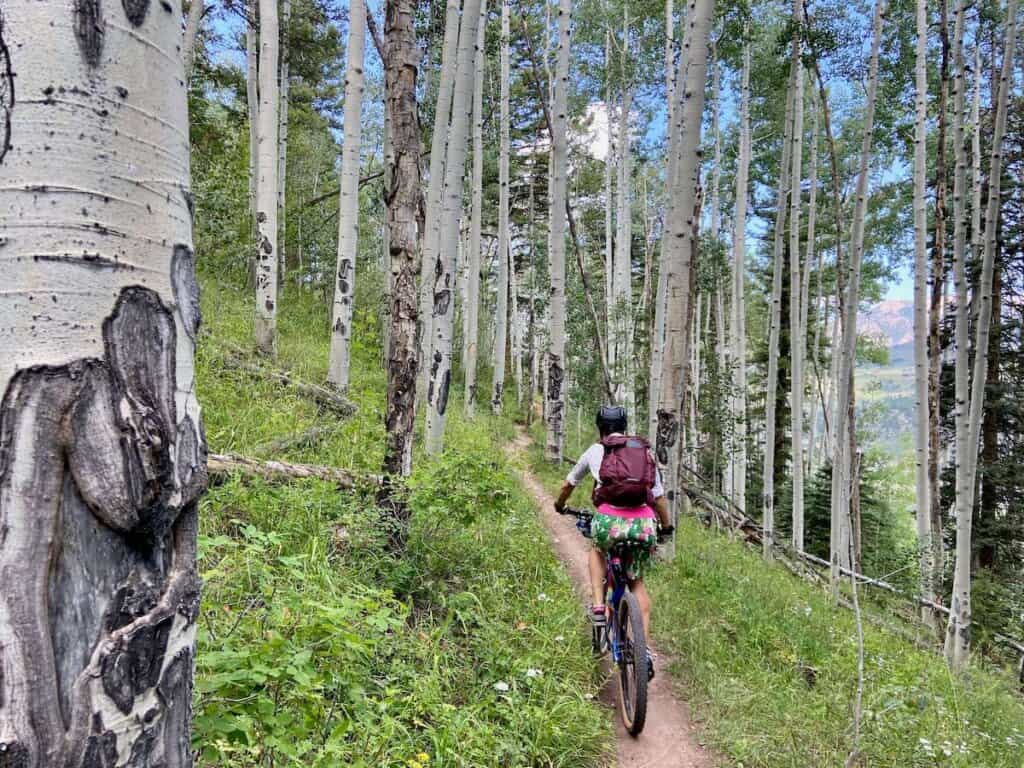
Vehicle Traffic
Unfortunately, there can actually be quite a bit of road traffic on this route, especially on weekends or during peak aspen foliage season in September.
Try to start your trip on a weekday so you avoid heavy Jeep and 4×4 traffic going up Last Dollar Pass outside of Telluride.
Choosing Which Singletrack To Ride
Ok, let’s talk about the singletrack… As an avid mountain biker, I was pretty disappointed with most of the singletrack on the Telluride to Moab route.
Most of the trails are primarily used by moto and cows (aka moo-to trails), so they’re not in the best shape, to say the least. They’re rocky, rutted, washed out, steep, and for the most part, flow-less.
If you are riding in wet conditions skip all of the singletrack unless you’re prepared for some super muddy suffering.
If I were to do this trip again knowing what I know now, here are the sections of singletrack I would choose:
Day 1 Singletrack:
Day 2 Singletrack: None
Day 3 Singletrack:
Day 4 Singletrack: None
Day 5 Singletrack:
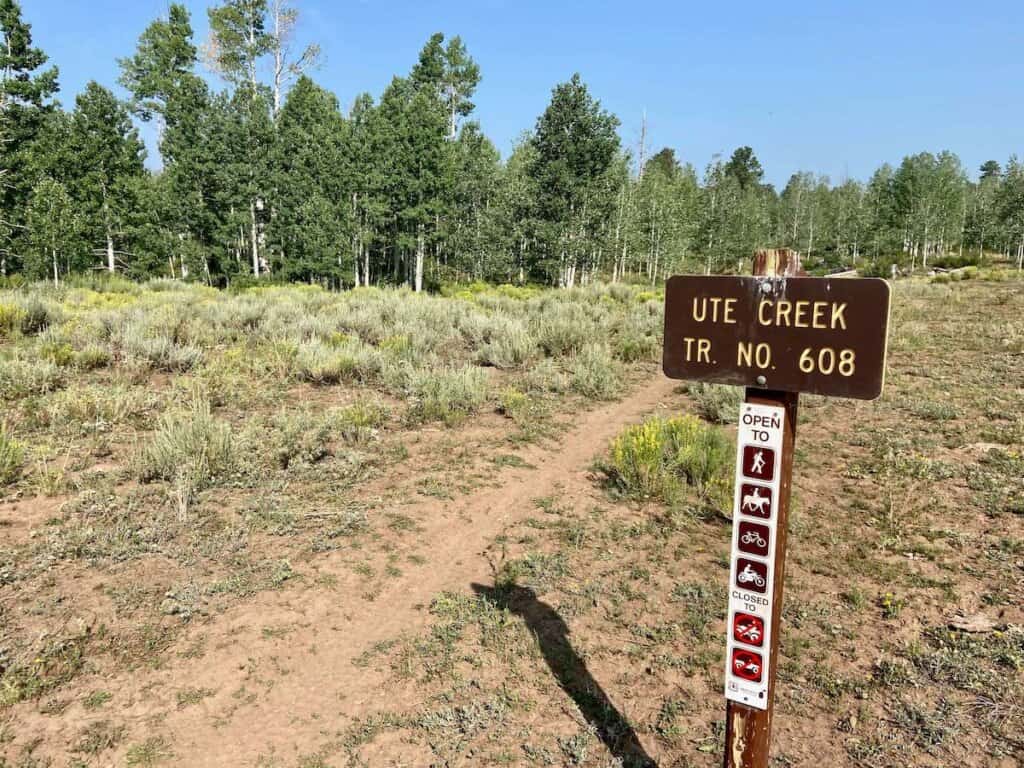
Day 6 Singletrack: None
Day 7 Singletrack:
The Patrick Intervention
Day 6. If you’ve already signed up for your Telluride to Moab San Juan Huts trip and have received your route packet you’ll see that Day 6 is all up. Like 4,500 ft over 21 miles of up. It may sound doable right now, but by Day 6 you’ll be thinking otherwise. Guaranteed.
Enter the Patrick Intervention. As you roll into the town of Gateway and you’re feeling like you can’t continue on or the temps are in the triple digits, stop at the Gateway Canyons General Store for a cold drink and ice cream and ask about a shuttle up John Brown Canyon for the next day. They have a list of names and phone numbers of people who will give you a ride. If you get Patrick, he’s awesome!
Sadly, Patrick has been called back to the East Coast and is no longer able to transport disheartened riders up John Brown Canyon. But the general store should still have a list of other shuttle options.
We were not ashamed to ask for a shuttle and after a relaxing night at the hut, we chose to get dropped off at the La Sal Mountains State Forest Sign the next day, which still gave us 8 miles of pedaling and 860ft of climbing.
If you’re debating whether to do the shuttle option out of Gateway or not, know that you have a 6.5-mile, 1,900ft climb on the last day (the silver lining is that it’s all paved and easy rolling).
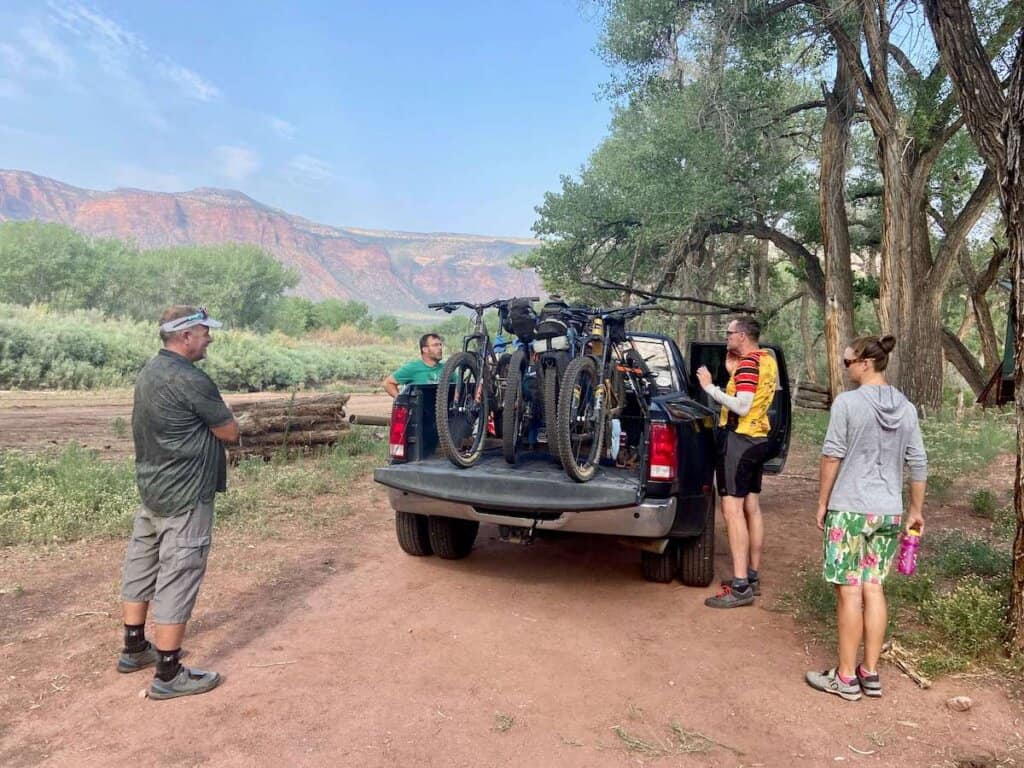
Inclement Weather
We lucked out with the weather and didn’t have a single drop of rain throughout our trip, but we definitely saw its effects.
Many of the singletrack trails and even parts of the roads were deeply rutted due to mud and parts of the route are on bentonite clay, which turns into an oil slick with even the slightest amount of precipitation.
There are also flash flood zones on the route like the steep, steep canyon descent down into Gateway and areas that are prone to lightning strikes.
I don’t want to say don’t do this trip if the weather looks bad, but I will definitely say prepare for some extra suffering.
The Huts
A unique part of doing this trip is staying in the San Juan Huts. Here’s what to know about them, dining options, and amenities.
Food Options
Be prepared to get your fix of canned food! Each hut is stocked with a variety of canned and boxed goods as well as salty and sweet snacks, cereals, pasta, dry grains, eggs, bacon, cheese, tortillas, and a few fresh fruits and veggies like carrots, potatoes, sweet potatoes, cabbage, apples, and oranges. There are also several big bags of Skratch Hydration, so drink up.
If you’re not a canned-food gourmet chef, there is a cookbook in each hut filled with easy, simple recipes that use stocked canned and dry goods. They’re surprisingly delicious! (Frito Pie and Pasta Carbonara were group favorites).
Is it possible to be a vegetarian on this trip? Yes, but not vegan unless you are prepared to eat a very small selection of food.
One of my favorite parts of the trip was cooking and sharing meals with everyone in our group!
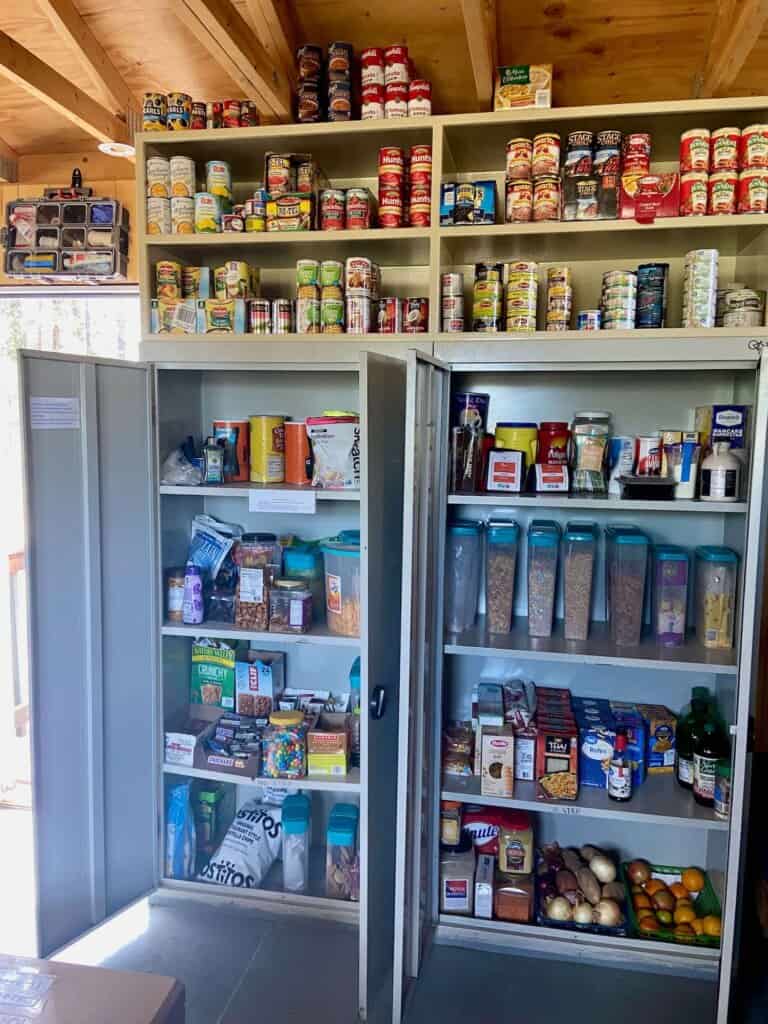
The Beer Package
Do it. If you drink alcohol the Beer Package is definitely worth it. Knowing that there’s a cold brew waiting for you at the next hut might even help you finish those last few, tough miles.
The Beer Package is $44 per person and gets you up to three beverages per day. There’s a wide selection of drinks to choose from including a variety of Colorado and Utah beers, light Mexican beers, hard seltzers, ciders, and white wine.
If you’re not a drinker, the huts also have cold bubbly water, Sprite, and Coke (you don’t need to purchase the beer package to enjoy those).
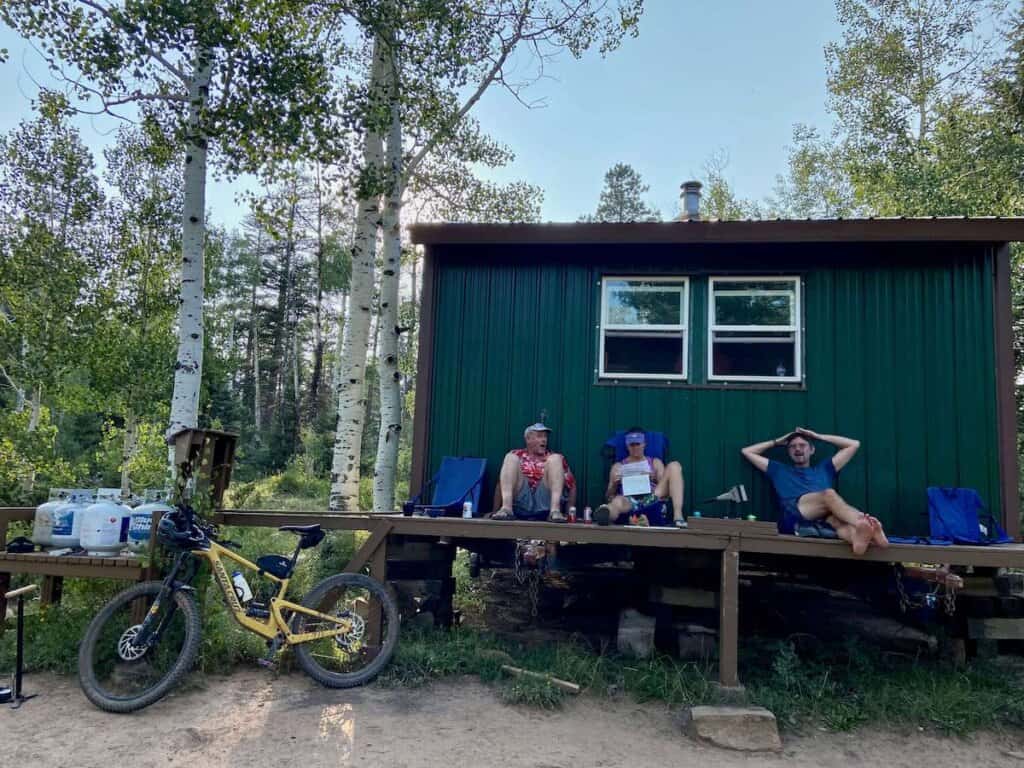
Water availability
The huts are stocked with fresh water in jugs (hand-carried in, so please conserve water!) which you can use to cook with and fill water bottles and reservoirs.
Unfortunately, there are not many places to fill up water in between huts. We brought a Sawyer Squeeze water filter with us just in case, but honestly, we didn’t have a chance to use it even when some of our group ran out of water (thankfully we ran across some ATVers who provided us with a few bottles of water to get us through).
I still think it’s a good idea to pack a water filter, but more importantly, be prepared to carry at least 3 L of water with you each day. A hydration pack with a 2.5-3 L reservoir and a water bottle or two for Skratch is ideal.
The Sleeping situation
Each hut can sleep 8 people, but a full hut would be pretty tight. We had 5 in our group and that felt tolerable.
You’ll be sleeping on vinyl-covered mattresses, which are actually pretty comfortable, but noisy if you move around a lot. If you’re a sensitive sleeper like me, be sure to pack good earplugs!
If the night temps are warm enough, it’s nice to drag the mattresses outside to sleep under the stars.
Note: In 2021, we had to bring our own sleeping bags. Otherwise, sleeping bags (not pillows) are provided, you just need to bring a sleeping bag liner.
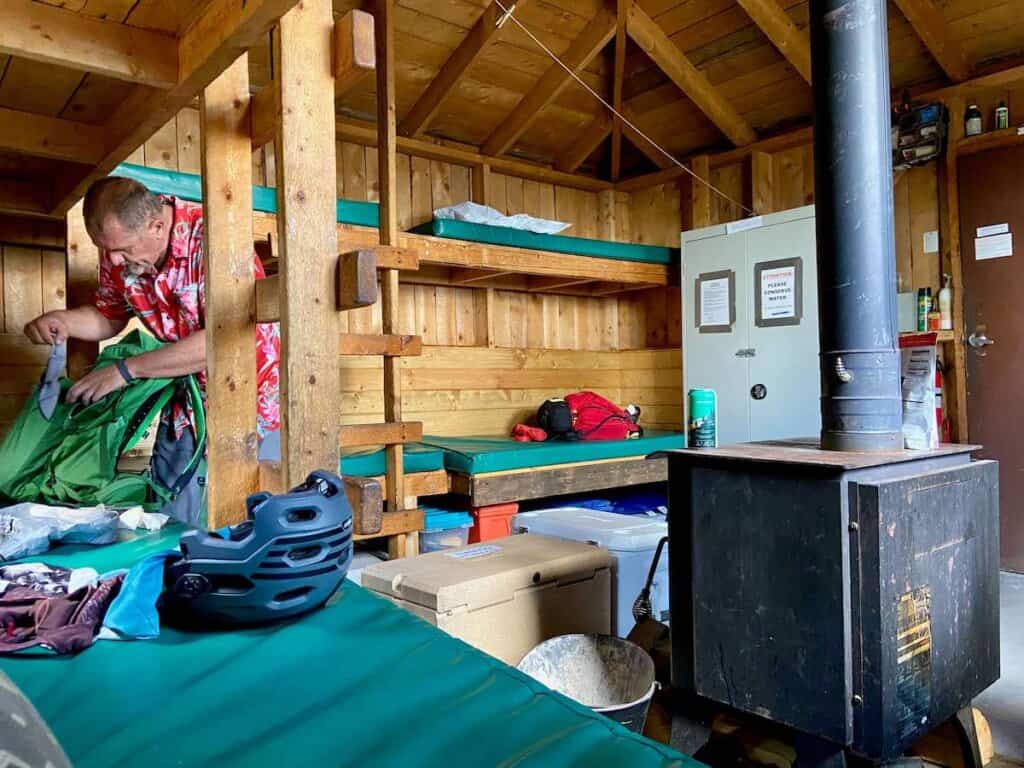
Composting toilets
Each hut has its own two-story composting toilet, which are actually pretty cool, relatively clean, and not smelly (some are better than others). Toilet paper is provided.
Supplied essentials
Each hut is stocked with these essential items:
- Sunscreen (it’s still a good idea to pack a small bottle for in between huts)
- Bug spray
- Hand sanitizer (there are large bottles of hand sanitizer in the toilets as well)
- Floor bike pump (some in better working order than others). There are no other bike tools.
- First aid kit
- Skratch hydration
- Toilet paper
What Gear To Pack
Everyone has different needs and levels of preferred comfort, but here’s a general list of what to pack for the Telluride to Moab San Juan Huts trip:
Food
You only need to bring food for the first day to hut 1. It’s a big day with a lot of climbing at altitude, so don’t skimp on nutrition!
Clothing
- 2 pairs of chamois
- 1 pair of bike shorts (optional if you prefer to wear just chamois)
- 2 pairs of wool or synthetic socks. No cotton.
- 2 bike jerseys or moisture-wicking t-shirts. No cotton.
- 2 sports bras
- 1 long-sleeve shirt (mid-weight if temps are cool)
- 1 puffy jacket (men’s)
- 1 lightweight rain jacket (men’s) and rain pants (men’s) if weather looks wet
- T-shirt, shorts, and leggings for hanging out at the huts and sleeping in
- Flipflops or sandals
- Neck gaiter to protect against sun or cold
**If you are riding early or late in the season, you will probably want warmer clothes and waterproof gear.
Biking gear
- Sunglasses
- 1 pair of bike gloves
- Bike shoes
- Helmet
- Hydration pack
- Water bottle(s)
- First aid kit
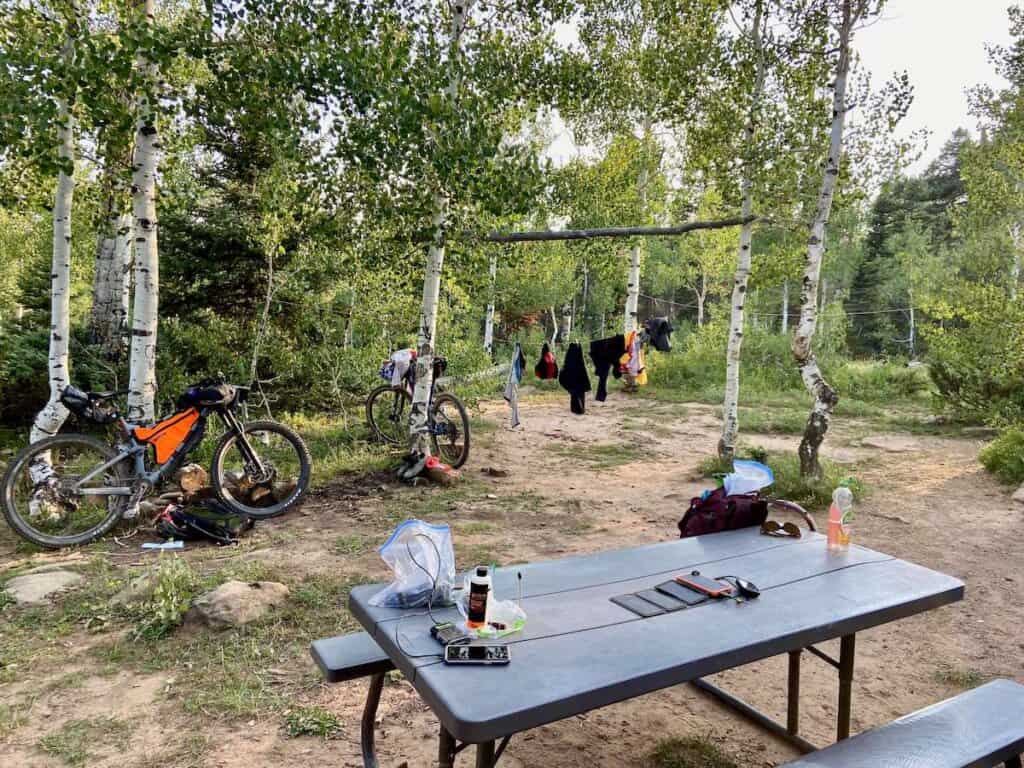
Toiletries & Camping Gear
- Wet wipes (budget 2-3 per day). Do not use hut water for showers. There is a shower at the Graham Ranch Hut.
- Small packets of chamois butter (1 per day)
- Chapstick
- Sunscreen (the huts are stocked with sunscreen, but it’s a good idea to bring a small bottle for riding during the day)
- Earplugs
- Inflatable pillow
- Sleeping bag or sleeping bag liner (I brought a 45° synthetic bag and was comfortable each night in August).
- Water filter (just in case)
- Cards/games (some huts have a deck of cards. We brought cards and a cribbage board and were very happy we did. There can be a lot of downtime!)
Electronics
The huts do not have electricity. You can charge electronics at the general store in Gateway, but that is at the end of Day 5.
- A bike computer. I have the Garmin Edge 830 bike computer and highly recommend it
- Battery power bank to charge electronics
- A headlamp (fully charged)
- Cell phone and charging cable
Bike tools & Spare Parts
Be prepared to fix almost any mechanical like flats, slashed tires, broken chains, broken spokes, bent derailleurs, etc…
My boyfriend had to do an emergency fork service on Day 2, which is extreme, but possible if you know what you’re doing!
- CO2 hand pump with CO2 cartridges
- Tire plugs + insertion tool
- Tire boot
- Spare 27.5” tube (can be used for any bike tire in a pinch)
- 2 spare valve cores
- 2 spare master chain links (make sure you get the right link for your drivetrain. Ex. 11-speed or 12-speed)
- Universal derailleur hanger
- Small bottle of chain lube
- Small bottle of tire sealant with injector
- Multi-tool with a chain breaker
- Leatherman (we had to use ours in lieu of a non-functioning can opener)
- Zip ties
- A few lengths of duct tape or gorilla tape
- FiberFix emergency spoke replacement kit
- Spare brake pads (the descent into Gateway is no joke!)

Final Thoughts
The Telluride to Moab hut-to-hut trip was… all the things for me. It was challenging, surprising, beautiful, frustrating, exhilarating, exhausting, rewarding…
I’m not sure I’d jump on board to do it again (maybe with a gravel bike), but I’m definitely glad I did it once.
It’s a unique trip that features incredible views, quirky cabins, varied terrain, and lots of time to get lots in your thoughts.
Just be prepared for high elevations, long days in the saddle, and lots of canned food 🙂
RELATED POSTS
Love big biking adventures? Check out these multi-day trips:
Are you planning a San Juan Hut System Telluride To Moab trip? What questions do you still have? If you’ve already done a San Juan Hut bike trip, what tips can you share? Leave a comment below!

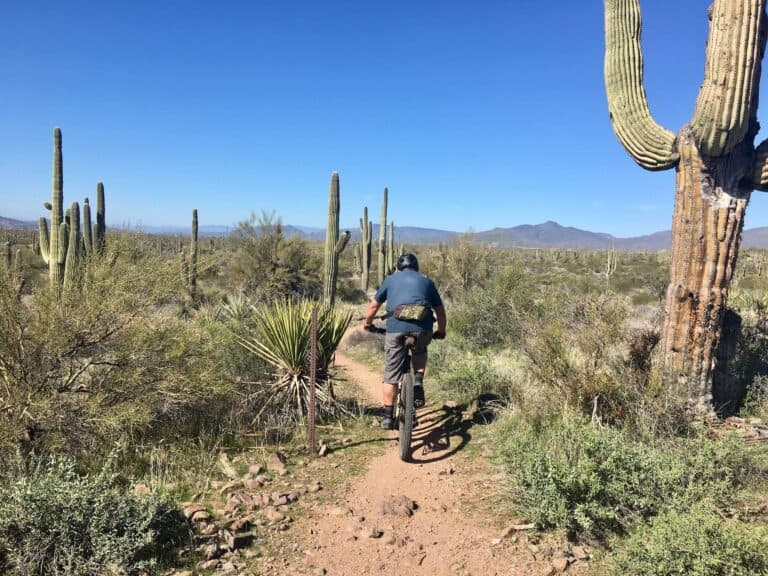
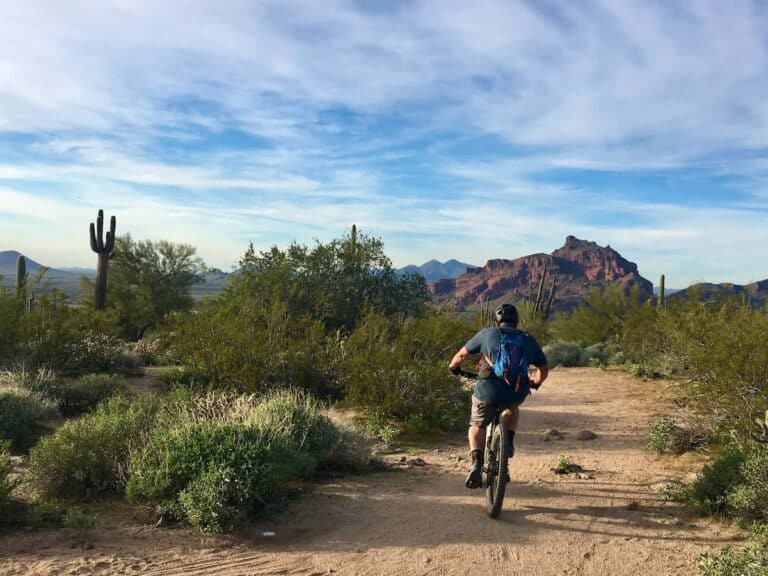
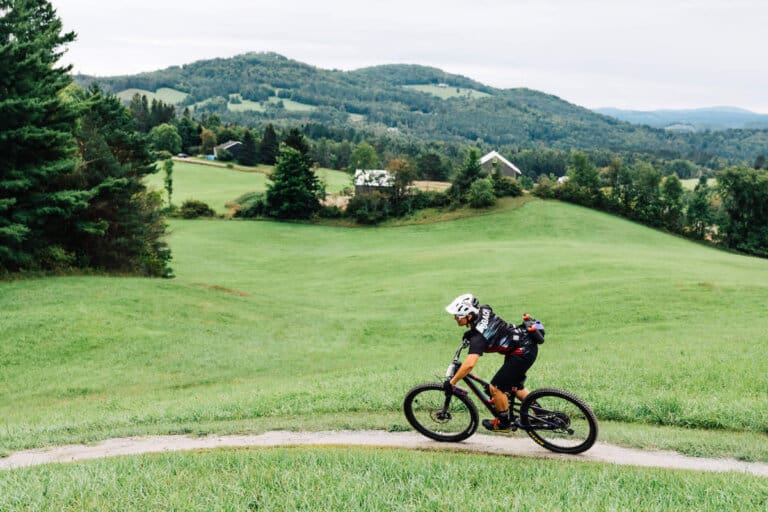
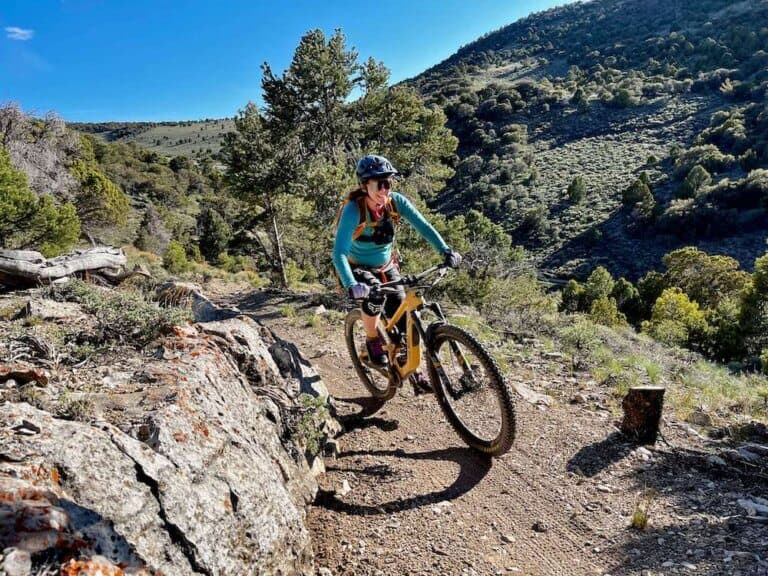
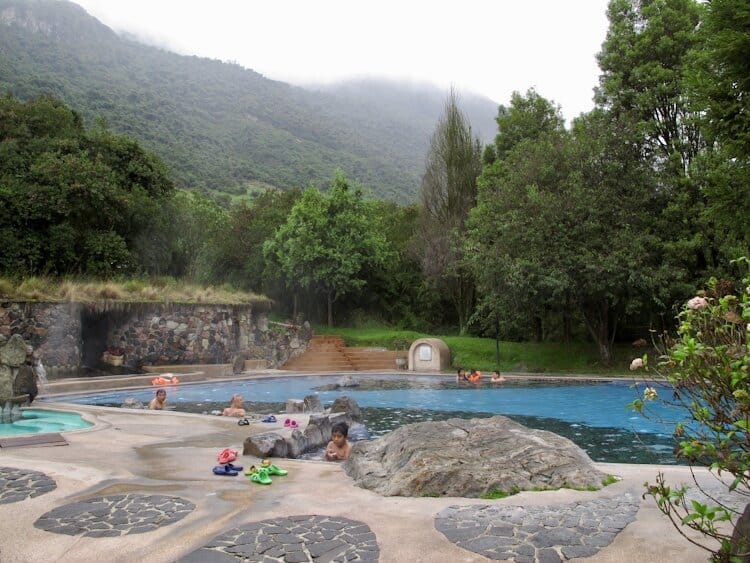
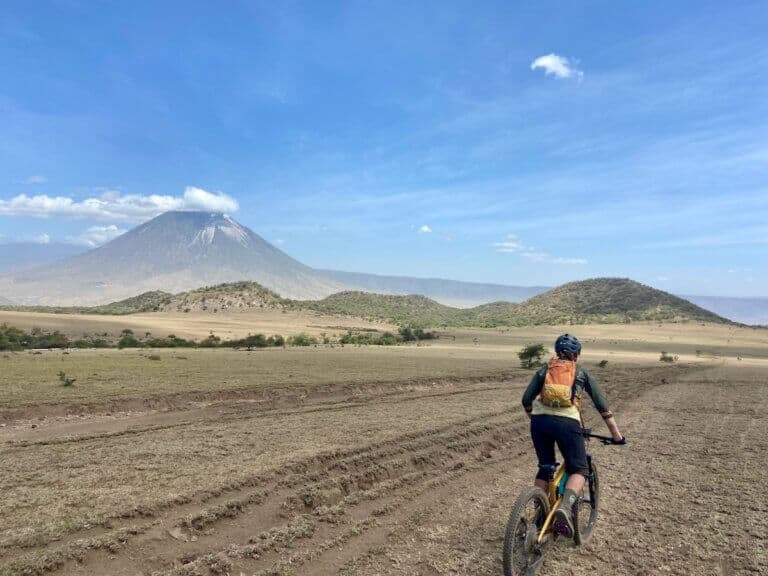
Hey it’s Patrick, the best part of the shuttles I offer are the people.
Thanks for the kind words, my wife just shook her head when she read them, like my head isn’t big enough already!! Tell your friend, yes, absolutely, I still love my Ram and brag every chance I get.
My number has changed but the adventures keeps getting better!!
970.697.7123
Thanks for giving us a lift! It was one of our highlights for the trip 🙂
You folks were awesome, glad I was able to be a part of your adventure! 👍✌️👍
This is Patrick, unfortunately I was called back east for some family matters and no longer providing shuttles. I’m happy for the people and adventures I had!!
Bummer! Sad to hear – but I’m sure you’ll figure out a way to help disheartened travelers on the east coast 🙂